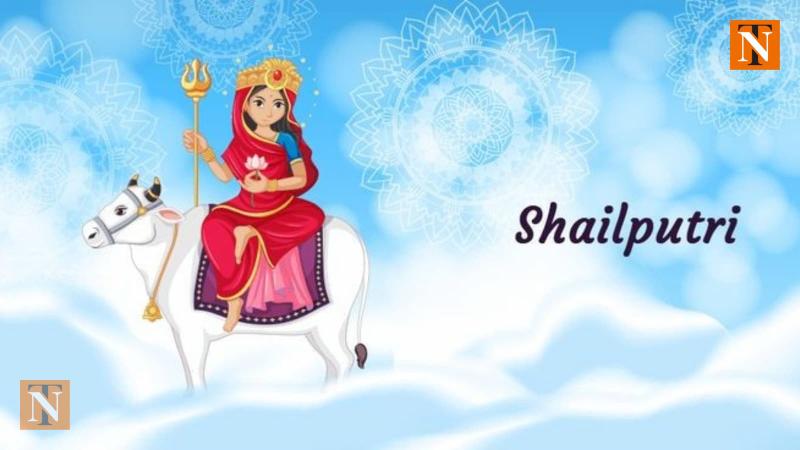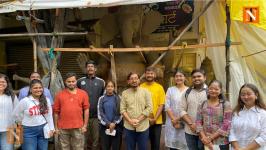Navratri Day 1: The Inspiring Tale of Goddess Shailaputri’s Strength and Devotion

Navratri, the vibrant and spiritual nine-day festival, celebrates the divine energy that powers the universe. This ancient festival is a tribute to Maa Durga and her nine sacred forms, each embodying a unique aspect of strength and grace. These nine goddesses—Shailaputri, Brahmacharini, Chandraghanta, Kushmanda, Skandamata, Katyayani, Kaalratri, Mahagauri, and Siddhidatri—are worshipped in a grand display of devotion, dance, and rituals.
But every great festival has its own story. Let's begin with the goddess who marks the first day of Navratri: and this nine forms of Maa Durga depits the journey of a female from new born to old age women.
Day 1- Maa Shailaputri, the daughter of the Himalayas.
The Journey of Sati to Shailaputri
Before she became Shailaputri, the daughter of the mountains, she was Sati, the beloved daughter of Daksha Prajapati, one of the sons of the Lord Brahma. From a young age, Sati was drawn to Lord Shiva. Despite her father’s disbelief for Shiva, whom he saw as an unfit match for his royal daughter, Sati’s love for him remained steadfast. She defied her father and married Shiva, living with him in the scared Kailash.
Years passed, and one day, Sati learned of a grand yajna being hosted by her father, to which all gods and goddesses were invited—except her and Shiva. Confused but hopeful, she convinced herself that she was welcome in her home. Ignoring Shiva's warnings, she went to her father’s house.
But the warmth she expected was nowhere to be found. Upon her arrival, she was met with cold indifference from her father and most of the guests. Only her mother welcomed her with open arms, but Sati was shattered by the rejection from her own father. His harsh words and humiliation of her beloved Shiva broke her spirit. Overcome with grief, she made a heartbreaking decision. In the very fire of the yajna, she went straight into havan kund and burned herself.
The Wrath of Shiva
When Shiva learned of Sati’s tragic death, his grief turned to fury. In his rage, he transformed into the terrifying Veerabhadra, a form so powerful that it caused destruction wherever he stepped. He stormed into the yajna and wreaked havoc, even beheaded Daksha Prajapati. His anger was so consuming that he carried Sati’s half-burned body across the universe, mourning her loss.
As Shiva wandered, lord Vishnu was concerned about the distruction and imbalnce in the universe. He decided to put an end, Lord Vishnu took his Sudarshan Chakra and directed it towards maa Sati’s body. Her body was scattered in 51 pieces and these sites became known as the sacred Shakti Peeths, powerful centers of divine energy scattered across India. Eventually, Daksha was restored to life with the head of a goat, and the yajna was completed with the blessings of Lord Vishnu.
The Birth of Shailaputri
Sati’s story didn’t end there. She was reborn as Shailaputri, the daughter of the Himalayas, also known as Parvati and Hemavati. In this new life, her love for Shiva was eternal. Maa Parvati did Meditation (Tapasya) to attain the divinity in her human form, eqivalent to Lord Shiva, in order to marry him. From this meditation the concept of 16 Somvaar took birth, and ever since females do this vrat to marry a compatible partner.
As Shailaputri, she rides a bull named Nandi, carries a trident and a lotus, and is one of the most powerful manifestations of Durga. Her strength symbolizes the beginning of the Navratri journey, a reminder of resilience, rebirth, and the unstoppable force of feminine energy.
On the first day of Navratri, devotees across India pray to Maa Shailaputri, seeking her blessings for a prosperous and spiritual journey throughout the festival. With her guidance, they begin their path of devotion, dancing and singing in celebration of the goddess who embodies both the power of the mountains and the unwavering love of the divine.








-t-thumb.jpeg)
-t-thumb.jpeg)
